Related Research Articles

In biology, evolution is the change in heritable characteristics of biological populations over successive generations. These characteristics are the expressions of genes, which are passed on from parent to offspring during reproduction. Variation tends to exist within any given population as a result of genetic mutation and recombination. Evolution occurs when evolutionary processes such as natural selection and genetic drift act on this variation, resulting in certain characteristics becoming more common or more rare within a population. The evolutionary pressures that determine whether a characteristic is common or rare within a population constantly change, resulting in a change in heritable characteristics arising over successive generations. It is this process of evolution that has given rise to biodiversity at every level of biological organisation.

Microevolution is the change in allele frequencies that occurs over time within a population. This change is due to four different processes: mutation, selection, gene flow and genetic drift. This change happens over a relatively short amount of time compared to the changes termed macroevolution.

Allopatric speciation – also referred to as geographic speciation, vicariant speciation, or its earlier name the dumbbell model – is a mode of speciation that occurs when biological populations become geographically isolated from each other to an extent that prevents or interferes with gene flow.
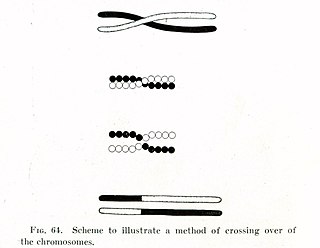
In evolutionary genetics, Muller's ratchet is a process through which, in the absence of recombination, an accumulation of irreversible deleterious mutations results. This happens due to the fact that in the absence of recombination, and assuming reverse mutations are rare, offspring bear at least as much mutational load as their parents. Muller proposed this mechanism as one reason why sexual reproduction may be favored over asexual reproduction, as sexual organisms benefit from recombination and consequent elimination of deleterious mutations. The negative effect of accumulating irreversible deleterious mutations may not be prevalent in organisms which, while they reproduce asexually, also undergo other forms of recombination. This effect has also been observed in those regions of the genomes of sexual organisms that do not undergo recombination.

Evolutionary biology is the subfield of biology that studies the evolutionary processes that produced the diversity of life on Earth. It is also defined as the study of the history of life forms on Earth. Evolution holds that all species are related and gradually change over generations. In a population, the genetic variations affect the phenotypes of an organism. These changes in the phenotypes will be an advantage to some organisms, which will then be passed onto their offspring. Some examples of evolution in species over many generations are the peppered moth and flightless birds. In the 1930s, the discipline of evolutionary biology emerged through what Julian Huxley called the modern synthesis of understanding, from previously unrelated fields of biological research, such as genetics and ecology, systematics, and paleontology.
Haldane's rule is an observation about the early stage of speciation, formulated in 1922 by the British evolutionary biologist J. B. S. Haldane, that states that if — in a species hybrid — only one sex is inviable or sterile, that sex is more likely to be the heterogametic sex. The heterogametic sex is the one with two different sex chromosomes; in therian mammals, for example, this is the male.

Peripatric speciation is a mode of speciation in which a new species is formed from an isolated peripheral population. Since peripatric speciation resembles allopatric speciation, in that populations are isolated and prevented from exchanging genes, it can often be difficult to distinguish between them. Nevertheless, the primary characteristic of peripatric speciation proposes that one of the populations is much smaller than the other. The terms peripatric and peripatry are often used in biogeography, referring to organisms whose ranges are closely adjacent but do not overlap, being separated where these organisms do not occur—for example on an oceanic island compared to the mainland. Such organisms are usually closely related ; their distribution being the result of peripatric speciation.
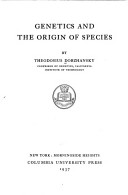
Genetics and the Origin of Species is a 1937 book by the Ukrainian-American evolutionary biologist Theodosius Dobzhansky. It is regarded as one of the most important works of the modern synthesis, and was one of the earliest. The book popularized the work of population genetics to other biologists, and influenced their appreciation for the genetic basis of evolution. In his book, Dobzhansky applied the theoretical work of Sewall Wright (1889–1988) to the study of natural populations, allowing him to address evolutionary problems in a novel way during his time. Dobzhansky implements theories of mutation, natural selection, and speciation throughout his book to explain habits of populations and the resulting effects on their genetic behavior. The book explains evolution in depth as a process over time that accounts for the diversity of all life on Earth. The study of evolution was present, but greatly neglected at the time. Dobzhansky illustrates that evolution regarding the origin and nature of species during this time in history was deemed mysterious, but had expanding potential for progress to be made in its field.

Disruptive selection, also called diversifying selection, describes changes in population genetics in which extreme values for a trait are favored over intermediate values. In this case, the variance of the trait increases and the population is divided into two distinct groups. In this more individuals acquire peripheral character value at both ends of the distribution curve.

Douglas Joel Futuyma is an American evolutionary biologist. He is a Distinguished Professor in the Department of Ecology and Evolution at Stony Brook University in Stony Brook, New York and a Research Associate on staff at the American Museum of Natural History in New York City. His research focuses on speciation and population biology. Futuyma is the author of a widely used undergraduate textbook on evolution and is also known for his work in public outreach, particularly in advocating against creationism.
Genetic hitchhiking, also called genetic draft or the hitchhiking effect, is when an allele changes frequency not because it itself is under natural selection, but because it is near another gene that is undergoing a selective sweep and that is on the same DNA chain. When one gene goes through a selective sweep, any other nearby polymorphisms that are in linkage disequilibrium will tend to change their allele frequencies too. Selective sweeps happen when newly appeared mutations are advantageous and increase in frequency. Neutral or even slightly deleterious alleles that happen to be close by on the chromosome 'hitchhike' along with the sweep. In contrast, effects on a neutral locus due to linkage disequilibrium with newly appeared deleterious mutations are called background selection. Both genetic hitchhiking and background selection are stochastic (random) evolutionary forces, like genetic drift.
Intralocus sexual conflict is a type of sexual conflict that occurs when a genetic locus harbours alleles which have opposing effects on the fitness of each sex, such that one allele improves the fitness of males, while the alternative allele improves the fitness of females. Such "sexually antagonistic" polymorphisms are ultimately generated by two forces: (i) the divergent reproductive roles of each sex, such as conflicts over optimal mating strategy, and (ii) the shared genome of both sexes, which generates positive between-sex genetic correlations for most traits. In the long term, intralocus sexual conflict is resolved when genetic mechanisms evolve that decouple the between-sex genetic correlations between traits. This can be achieved, for example, via the evolution of sex-biased or sex-limited genes.

Ecological speciation is a form of speciation arising from reproductive isolation that occurs due to an ecological factor that reduces or eliminates gene flow between two populations of a species. Ecological factors can include changes in the environmental conditions in which a species experiences, such as behavioral changes involving predation, predator avoidance, pollinator attraction, and foraging; as well as changes in mate choice due to sexual selection or communication systems. Ecologically-driven reproductive isolation under divergent natural selection leads to the formation of new species. This has been documented in many cases in nature and has been a major focus of research on speciation for the past few decades.

The extended evolutionary synthesis consists of a set of theoretical concepts argued to be more comprehensive than the earlier modern synthesis of evolutionary biology that took place between 1918 and 1942. The extended evolutionary synthesis was called for in the 1950s by C. H. Waddington, argued for on the basis of punctuated equilibrium by Stephen Jay Gould and Niles Eldredge in the 1980s, and was reconceptualized in 2007 by Massimo Pigliucci and Gerd B. Müller. Notably, Dr. Müller concluded from this research that Natural Selection has no way of explaining speciation, saying: “selection has no innovative capacity...the generative and the ordering aspects of morphological evolution are thus absent from evolutionary theory.”

Reinforcement is a process of speciation where natural selection increases the reproductive isolation between two populations of species. This occurs as a result of selection acting against the production of hybrid individuals of low fitness. The idea was originally developed by Alfred Russel Wallace and is sometimes referred to as the Wallace effect. The modern concept of reinforcement originates from Theodosius Dobzhansky. He envisioned a species separated allopatrically, where during secondary contact the two populations mate, producing hybrids with lower fitness. Natural selection results from the hybrid's inability to produce viable offspring; thus members of one species who do not mate with members of the other have greater reproductive success. This favors the evolution of greater prezygotic isolation. Reinforcement is one of the few cases in which selection can favor an increase in prezygotic isolation, influencing the process of speciation directly. This aspect has been particularly appealing among evolutionary biologists.
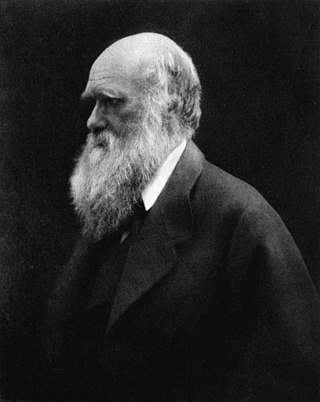
The scientific study of speciation — how species evolve to become new species — began around the time of Charles Darwin in the middle of the 19th century. Many naturalists at the time recognized the relationship between biogeography and the evolution of species. The 20th century saw the growth of the field of speciation, with major contributors such as Ernst Mayr researching and documenting species' geographic patterns and relationships. The field grew in prominence with the modern evolutionary synthesis in the early part of that century. Since then, research on speciation has expanded immensely.

Reinforcement is a process within speciation where natural selection increases the reproductive isolation between two populations of species by reducing the production of hybrids. Evidence for speciation by reinforcement has been gathered since the 1990s, and along with data from comparative studies and laboratory experiments, has overcome many of the objections to the theory. Differences in behavior or biology that inhibit formation of hybrid zygotes are termed prezygotic isolation. Reinforcement can be shown to be occurring by measuring the strength of prezygotic isolation in a sympatric population in comparison to an allopatric population of the same species. Comparative studies of this allow for determining large-scale patterns in nature across various taxa. Mating patterns in hybrid zones can also be used to detect reinforcement. Reproductive character displacement is seen as a result of reinforcement, so many of the cases in nature express this pattern in sympatry. Reinforcement's prevalence is unknown, but the patterns of reproductive character displacement are found across numerous taxa, and is considered to be a common occurrence in nature. Studies of reinforcement in nature often prove difficult, as alternative explanations for the detected patterns can be asserted. Nevertheless, empirical evidence exists for reinforcement occurring across various taxa and its role in precipitating speciation is conclusive.
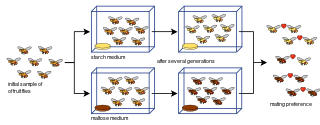
Laboratory experiments of speciation have been conducted for all four modes of speciation: allopatric, peripatric, parapatric, and sympatric; and various other processes involving speciation: hybridization, reinforcement, founder effects, among others. Most of the experiments have been done on flies, in particular Drosophila fruit flies. However, more recent studies have tested yeasts, fungi, and even viruses.
Maria R. Servedio is a Canadian-American professor at the University of North Carolina at Chapel Hill. Her research spans a wide range of topics in evolutionary biology from sexual selection to evolution of behavior. She largely approaches these topics using mathematical models. Her current research interests include speciation and reinforcement, mate choice, and learning with a particular focus on evolutionary mechanisms that promote premating (prezygotic) isolation. Through integrative approaches and collaborations, she uses mathematical models along with experimental, genetic, and comparative techniques to draw conclusions on how evolution occurs. She has published extensively on these topics and has more than 50 peer-reviewed articles. She served as Vice President in 2018 of the American Society of Naturalists, and has been elected to serve as President in 2023.
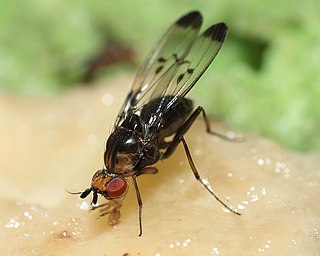
Drosophila silvestris is a large species of fly in the family Drosophilidae that are primarily black with yellow spots. As a rare species of fruit fly endemic to Hawaii, the fly often experiences reproductive isolation. Despite barriers in nature, D. silvestris is able to breed with D. heteroneura to create hybrid flies in the laboratory.
References
- ↑ "Mark A Kirkpatrick - Integrative Biology Faculty page". integrativebio.utexas.edu. Retrieved 2020-12-15.
- ↑ Futuyma, Douglas J.; Kirkpatrick, Mark. (2017). Evolution. Sunderland, Mass: Sinauer Associates. ISBN 9781605356051.
- 1 2 "Evolutionary Biologist Mark Kirkpatrick Elected to National Academy of Sciences". cns.utexas.edu. Retrieved 2020-12-15.
- ↑ Kirkpatrick, M. (1989). "Sexual selection and the evolution of female choice". Evolution. 36 (1): 1–12. doi: 10.1111/j.1558-5646.1982.tb05003.x . PMID 28581098.
- ↑ Lande, R. (1981). "Models of speciation by sexual selection on polygenic traits". Proc. Natl. Acad. Sci. USA. 78 (6): 3721–5. Bibcode:1981PNAS...78.3721L. doi: 10.1073/pnas.78.6.3721 . PMC 319643 . PMID 16593036.
- ↑ Fisher, R.A. (1930). The genetical theory of natural selection. Oxford, UK: Clarendon Press.
- ↑ "Professor Mark Kirkpatrick". American Academy of Arts and Sciences. Retrieved 2020-12-15.
- ↑ "Research". Kirkpatrick Lab Website. Retrieved 2020-12-15.
- ↑ "Mark Kirkpatrick's CV (2012)" . Retrieved 2020-12-15.